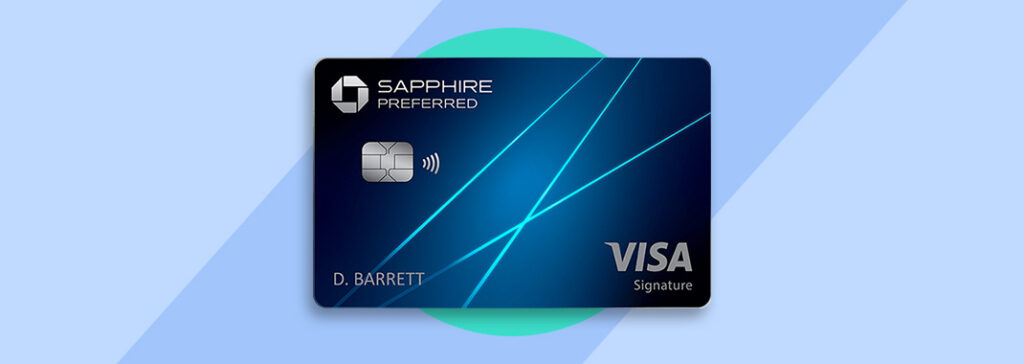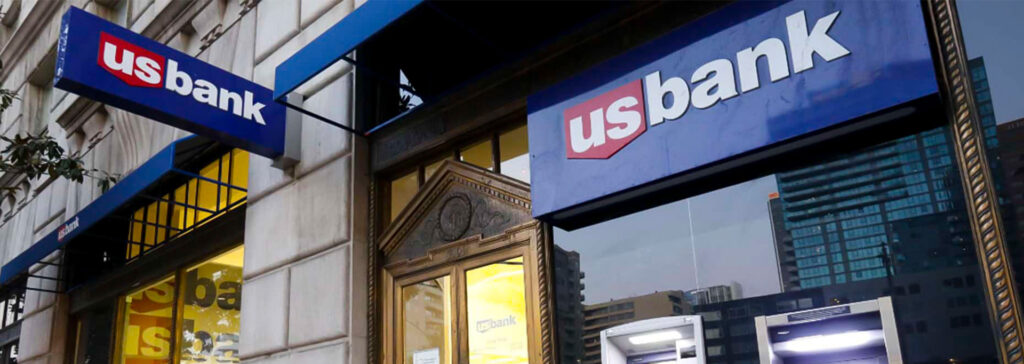Most products on this page are from partners who may compensate us. This may influence which products we write about and where and how they appear on the page. However, opinions expressed here are the author's alone, not those of any bank, credit card issuer, airline or hotel chain. This page may include information about American Express products currently unavailable on Slickdeals. American Express is not a partner of Slickdeals.
Credit cards aren't just another way to pay for your purchases. Those pieces of plastic or metal in your wallet come with a lot of perks. From better fraud protections to credit-building potential, learn how to travel for free by using credit cards to pay for your day-to-day expenses.
Earn Valuable Points or Miles for TravelBest Travel Credit Cards
Visit the Marketplace
Travel rewards are some of the most exciting benefits that credit cards may offer. If you choose the best rewards cards and you're strategic about how you use them, you might even earn free vacations.
Travel Rewards Credit Cards How to Get Free Travel with Travel Rewards Credit Cards
Are you new to the world of credit card rewards? Learning how to travel for free may be easier than you think. Below are four simple tips that could help you earn your first vacation with credit card rewards.
-
1
Earn Travel With the Best Credit Cards for Rewards
If you already have excellent credit and you're not afraid to pay higher annual fees when the benefits outweigh the costs, you might want to skip straight ahead to a premium travel rewards card.
-
2
Earn the Biggest Credit Card Bonuses
Sign-up bonuses can be a great way to get a lot of points or miles in a short amount of time. But, make sure you can reach the spending requirements to earn.
-
3
Don't Offset Your Earnings with Interest Payments
Make sure you pay off your credit card every month. This way, you are not offsetting your earning with high interest rates. This is a good idea for any credit card.
-
4
Look for Opportunities to Pay With Your Card
Use your credit card to pay more bills. You can set up automatic payment to your card from other accounts and earn the rewards.
-
5
Add Authorized Users
Some credit cards give more bonus points or miles when you add authorized users. Plus, spending by the authorized user can get you more rewards.
-
6
Join Hotel and Airline Loyalty Programs
Earn more by joining the hotel loyalty programs or frequent flier partnerships from hotels and airlines you use the most. This can get you free flights and hotel stays quicker.
-
7
Choose Cost-Effective Lodging and Travel Methods
Finding cost-effective lodging and travel methods could help you to stretch your rewards further.
-
8
Look for Point Redemption Value
Before you officially redeem rewards, you need to figure out the value of what you're getting. Calculating redemption value involves comparing how much a travel purchase would cost you in points or miles versus cash.
-
9
Transfer Points Between Programs
Transferring points to a travel partner will often help you get the maximum potential value out of your credit card rewards.
-
10
Stay Organized
There are tons of apps and technology such as the Nerdwallet app, dedicated to keeping track of rewards. You can also use a spreadsheet.
Step One: Earn Travel With the Best Credit Cards for Rewards
Before you can earn a free or cheap vacation courtesy of credit card rewards, you need to open the right accounts. A good travel rewards card can easily help you earn hundreds of dollars or more in free travel. One travel rewards expert took a dozen free trips in just one year by using credit card rewards.
Are you new to the world of travel rewards? The following credit cards might be a good place to start.
Chase Sapphire Preferred® Card
- Our Rating 5/5 How our ratings work
- APR19.99% - 28.24% (Variable)
- Annual Fee$95
-
Sign Up Bonus
75,000Chase Ultimate Rewards Points
Earn 75,000 bonus points after you spend $5,000 on purchases in the first 3 months from account opening. Dollar Equivalent: $1,650 (75,000 Chase Ultimate Rewards Points * 0.022 base)
The Chase Sapphire Preferred Card is one of the gold standards for earning travel rewards. It has a generous sign-up bonus and you can earn points on travel and dining expenses. The card does have an annual fee, but you can continue earning points through bonus categories and an anniversary points boost.
Overview
The Chase Sapphire Preferred is pretty flexible as it lets you transfer rewards points into miles or points several airlines and hotel programs. You can take advantage of strong transfer partners such as United, Southwest, Singapore Airlines, Virgin Atlantic and Hyatt. Similarly, you can book any reservation you want through the Chase Travel℠ portal. Although the card might not be ideal for the most frequent travelers, it has a built-in upgrade path, so when it’s time to level up your travel rewards game, you won’t have to start from scratch.
Pros
- Points are easily transferable to airlines and hotel partners
- Accelerated earnings on dining, travel & household purchases
- Excellent travel and purchase protections
- No foreign transaction fees
Cons
- Not ideal for the highest spenders
- $95 annual fee
Capital One Venture Rewards Credit Card
- Our Rating 4.5/5 How our ratings work
- APR19.99% - 28.99% (Variable)
- Annual Fee$95
-
Sign Up Bonus
75,000Capital One Rewards Miles
Enjoy $250 to use on Capital One Travel in your first cardholder year, plus earn 75,000 bonus miles once you spend $4,000 on purchases within the first 3 months from account opening - that’s equal to $1,000 in travel Dollar Equivalent: $1,350 (75,000 Capital One Rewards Miles * 0.018 base)
The Capital One Venture Rewards Credit Card offers a lot of value to both beginner and expert travelers. The upfront bonus and high ongoing rewards rate aren’t easy to beat, making the card a solid option for a large audience. Where it really shines is with the flexibility of the redemption process, though. You can redeem miles to cover past travel expenses, book travel through Capital One or transfer miles to any of Capital One’s airline and hotel loyalty programs.
Overview
The Capital One Venture Rewards Credit Card offers a lot of value to beginner and expert travelers alike. The card’s big upfront bonus and high ongoing rewards rate aren’t easy to beat, making it a solid option for a large audience. Where it really shines, though, is with the redemption process. When it comes to travel credit cards, it can be really challenging to find a way to use your rewards in the way you want.
With hotel and airline credit cards, for instance, you’re basically stuck redeeming your points or miles with the co-branded hotel or airline partner. And with some general rewards programs, you might get less value if you use your points or miles to book a flight versus a rental car or hotel.
With the Capital One Venture Rewards Credit Card, though, you’ll get a lot of flexibility. Here are some of the top redemption options that are available: redeem miles to cover past travel expenses, book travel through Capital One or transfer miles to any of Capital One’s multiple airline and hotel loyalty programs.
Perks
- Receive an application fee credit for TSA Pre✓® or Global Entry every four years
- No foreign transaction fees
- Access to premier culinary events, must-see music events and major sporting events
Pros
- Simple rewards and earning structure
- Ability to earn transferable points to use with travel partners
- Relatively modest $95 annual fee
- Application fee credit for TSA PreCheck or Global Entry
Cons
- Other travel cards offer higher rewards rates on certain spending categories
Capital One VentureOne Rewards Credit Card
- Our Rating 4.0/5 How our ratings work
- APR18.99% - 28.99% (Variable)
- Annual Fee$0
-
Sign Up Bonus
20,000Capital One Rewards Miles
New cardholders can earn 20,000 bonus miles after spending $500 with the card during the first three months of account opening. Dollar Equivalent: $360 (20,000 Capital One Rewards Miles * 0.018 base)
The Capital One VentureOne Rewards Credit Card features several standout benefits, including the ability to transfer miles to Capital One travel partners—an uncommon feature on a card with no annual fee. Plus, the ability to transfer miles to travel partners—both airlines and hotels—is arguably the most attractive feature of this travel card.
Overview
The Capital One VentureOne Rewards Credit Card features several standout benefits. Perhaps the most appealing feature of this travel credit card is the ability to transfer miles to Capital One travel partners—an uncommon feature on a card with no annual fee. Plus, the ability to transfer miles to travel partners—both airlines and hotels—is arguably the most attractive feature of this travel card.
Pros
- No annual fee
- Ability to earn transferable points to use on travel partners
- No foreign transaction fees
Cons
- Earning rate is lower than some of the competition
- Not useful if you don't spend in dining, entertainment, streaming, and supermarket categories
Step Two: Earn the Biggest Credit Card Bonuses
Opening the right credit card is the first step to learning how to travel for free with credit card rewards. But you should also pay attention to minimum spending requirements, or you might not earn those valuable sign up bonuses.
I am a huge fan of sign-up bonuses. They're an easy way to earn a stockpile of travel reward points in a short period of time. Sign-up bonuses helped me earn over 300,000 points through American Express and Chase in just six months.
Unfortunately, if you don't spend enough money before your sign-up bonus deadline, you could leave unclaimed points on the table. Here are a few tips to make sure you don't miss out on a valuable sign-up bonus offer.
- Time large purchases wisely. Do you need to replace a major appliance or book travel? If so, it might be a great time to meet all or part of a new card's spending requirement.
- Track your spending. Make a habit of checking your account at least once a week. Track how close you are to hitting the spending requirement on your new account.
- Prepay for services. You should never spend extra money to earn rewards. But, if you're coming up short for a sign-up bonus, you might consider prepaying certain expenses you need to make anyway. For example, your insurance company might let you pay for 6–12 months of coverage in advance. You might even score a discount for paying early. But don't use this strategy unless you can afford to pay off the full charge by your statement due date.
Step Three: Don't Offset Your Earnings
Pay your statement balance in full every month (and on time). That's the golden rule when it comes to smart credit card management — rewards cards or otherwise.
Revolving an unpaid credit card balance from month to month is a bad idea for two reasons. First, if your credit reports show large credit card balances (especially if your balance-to-limit ratio is high), your credit scores might decline. The second reason carrying credit card debt is a bad idea is because of the cost.
For many people, credit card debt is among the most expensive debt they'll ever carry. The Federal Reserve reports that the average interest rate on credit cards that assessed interest is just under 17% (Q3 2019).
If you charge more money on your credit cards than you can afford to pay off each month, high-interest rates will likely offset your rewards. That "free" vacation won't really be free if you waste hundreds or thousands of dollars in interest to earn the points.
Step Four: Look for Opportunities to Pay With Your Card
It's never wise to spend extra money to chase credit card rewards. But you may already be spending money each month on expenses you could pay for with a credit card instead.
Do you pay any of the following expenses with a check, debit card, or ACH draft?
- Insurance Premiums
- Cell Phone Service
- Utility Bills
- Cable and Internet Service
- Daycare or Tuition
- Children's Program Fees (Sports, Tutoring, Classes, etc.)
- Rent or Mortgage Payments
If so, you might be able to switch to a credit card as your form of payment and earn more rewards.
Before you switch your method of payment, make sure there are no additional fees to pay with a credit card. If an extra fee applies, you should only use your credit card if your rewards rate beats the extra cost
Step Five: Add Authorized Users
Adding an authorized user to your credit card might help you to earn more travel rewards in a few ways. First, when your authorized users make purchases, any rewards they earn should be added to your main account.
Some card issuers may also reward you with bonus points when you add authorized users. This isn't common, but it can happen. American Express, for example, reportedly sent out targeted offers to select Platinum Card holders not long ago. The offer gave card holders the chance to earn 5,000 Membership Rewards Points per authorized user (up to 20,000 total points) for a limited time.
There are, however, two potential drawbacks of adding authorized users to your credit card. First, you may have to pay a fee to add an authorized user to your credit card. You're also liable for any charges authorized users make on your account. On the bright side, if you add someone as an authorized user to a well-managed credit card, it might help your loved one improve his or her credit rating as a result.
Step Six: Join Hotel and Airline Loyalty Programs
The right rewards credit cards are the foundation of a successful travel rewards strategy. But you can multiply your earning potential with a little planning. Join airline, hotel, and other loyalty programs to get more bang for your buck.
Now, there are dozens of airlines and even more hotel brands. You don't have to sign up for all of their loyalty and frequent flyer programs. Instead, join the loyalty programs of any airline you fly (or plan to fly) and any hotel chains where you may book reservations in the future. Typically, you'll need to set up a loyalty account if you want to transfer credit card rewards to a specific hotel or airline partner (see more on transferring points below).
If you book travel through a third-party website, like Expedia or Orbitz, make sure to include your airline and hotel loyalty program numbers there as well so you can earn points for your purchases. Finally, you may be able to score extra rewards through loyalty programs in unexpected ways.
- Receive 250 Wyndam Hotel Reward Points for every DoorDash order you place.
- Get 1 Delta mile per dollar you spend with Lyft.
- Earn 3 Hilton Honors Points per dollar you spend with Lyft.
Advance planning could easily help you earn triple rewards when you book travel.
Step Seven: Choose Cost-Effective Lodging and Travel Methods
Just like it pays off to find the best credit card offer to match your credit rating and spending habits, it's essential to do your homework before you book a vacation with the rewards you earn.
If your heart isn't set on a specific destination or travel during a certain time of year, you may be able to find a steal. These tips may help.
- Look at travel costs during the off-season.
- Book using flexible dates to take advantage of lower award fares and hotel rates.
- Consider visiting three to five different destinations, then research how many points and miles each would cost you.
- Think about flying out of a different airport and compare award fare costs.
- Compare multiple transfer options between your credit card's travel partners to find the best available deal.
Here are 7 amazing travel deals you can book with Chase Ultimate Reward Points for inspiration.
Step Eight: Look for Point Redemption Value
 Related Article
Related Article
What Are Points and Miles Worth?
You can calculate redemption value on your own or you can search for online award rate calculators to help you. If you want to run the figures yourself, use the following formula.
- Redemption Value = (Cash Price ÷ Award Price) X 100
Slickdeals Contributor Eric Rosenberg found an amazing deal that serves as a great example here — a business class flight on United from JFK International Airport in New York to Frankfurt, Germany for 120,000 points. If you paid for the round-trip flight in cash, it would cost you around $4,000. Here's a look at the redemption value for that flight.
- $4,000 ÷ 120,000 = 0.03 X 100 = 3.3
The redemption value on this flight is 3.3. In other words, your points are worth 3.3 cents each.
Currently, the average redemption value for airline miles among U.S. carriers is reported to be 1.3 cents. So, 3.3 cents is a superb value. You won't always be so lucky. If your calculations reveal a low redemption value, you might be better off changing your travel plans if you can or paying cash if you can't.
Step Nine: Transfer Points Between Programs
Transferring points to a travel partner will often help you get the maximum potential value out of your credit card rewards. Thankfully, the process of moving credit card rewards to a travel partner is generally easy to navigate. If your credit card offers this benefit, you should be able to log into your rewards portal to initiate the transfer.
Let's look at Chase Ultimate Rewards Points as an example. With eligible cards, like the Sapphire Preferred and Sapphire Reserve, you can transfer your points to 13 different airline and hotel partners at a 1:1 ratio. Through Chase's 10 airline partners, you can book award travel with all three major airline alliances—Star Alliance, Oneworld, and SkyTeam. This gives you more options. For example, you can move Ultimate Rewards Points to British Airways and, from there, book flights on American Airlines.
How to Transfer Ultimate Reward Points
- Log into your Ultimate Rewards account.
- Select the drop-down arrow next to your points total at the top of the page.
- Choose "Transfer to Travel Partners."
- Select the airline or hotel partner of your choice.
- Select "Transfer Points."
The process to transfer points from American Express Membership Rewards is also user-friendly, and you can choose between 22 travel partners. Many points transfers are instant, yet some require one to two days to move the points from your credit card to a hotel or airline partner. Be sure to keep this in mind when you're ready to redeem your points.
Finally, don't move your points to a travel partner until you're 100% sure of your plan to redeem them. Once you transfer points, you can't take that action back.
Step 10: Stay Organized
Booking free travel with credit card rewards can be fun and addictive. However, it's not always easy — especially if you want to make sure you're getting the best deal possible. For this reason, it's important to stay organized.
Some people use technology to help them track the travel rewards they accumulate from credit cards and loyalty programs, along with expiration dates and other credit card benefits (like annual travel credits). Apps like Award Wallet and TripIt receive high praise in this space, though there are other options to choose from as well. Other points and miles enthusiasts prefer to track their rewards on their own, via spreadsheets or notes. In the end, you should choose the option that works best for you and stick with it.
Want to get more mileage out of the travel rewards you earn? Learn five travel rewards mistakes you should stop making.
















